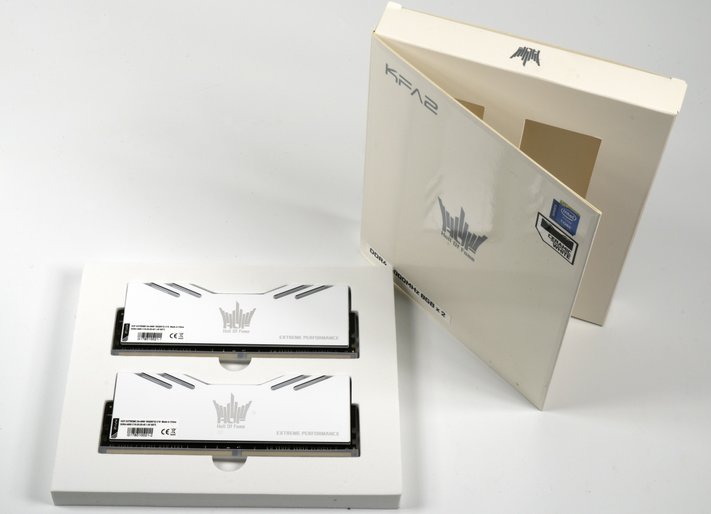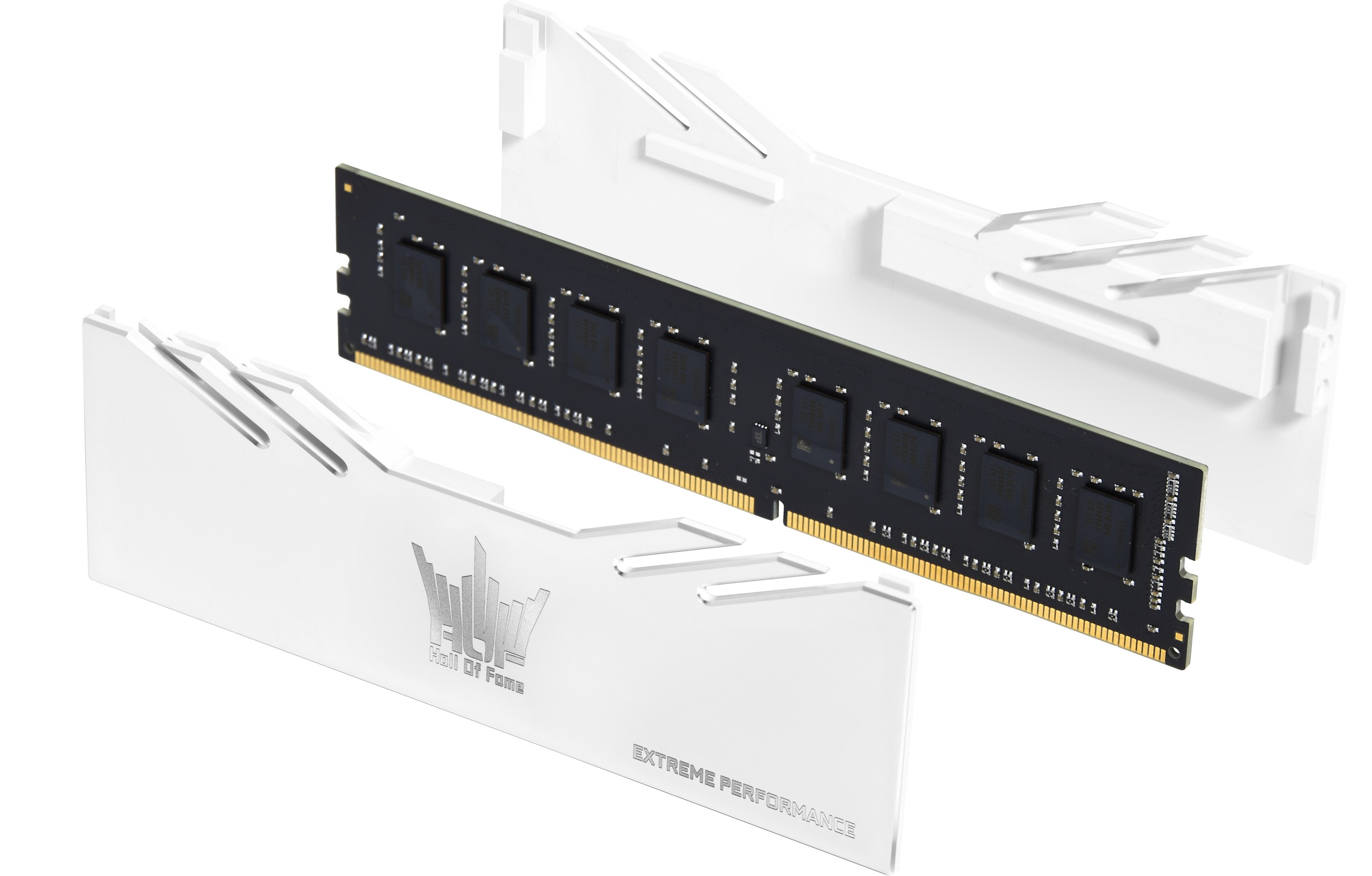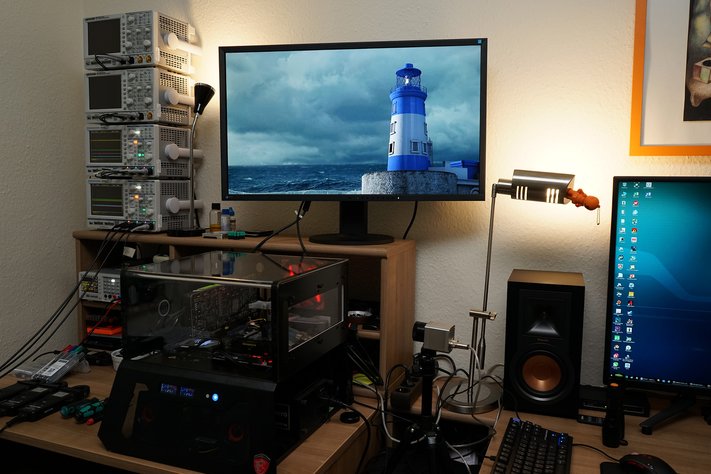What is white, fast and in its class still (with) the cheapest offer? With the KFA2 Hall Of Fame Extreme DDR4-4000, you can not only visually finely upgrade your system, but also accelerate it. Today's test must show what this will bring in practice. This time, we deliberately designed the test scenario in a practical way, because all synthetic tests with similarly fast competitor products were at an almost identical level within the scope of the measurement tolerances. By the way, because everyone ends up using the same memory modules from Samsung.
Based on this fast memory, we want to compare the comparison of the individual clock rates for Intel and AMD processors within the framework of the technically feasible and optimized, common settings for professional applications (compute) and gaming.

Thus, as a distinguishing or Unique selling point is actually only the optics. But that's where KFA2 (Galax) goes its own way. Apart from the extraordinary color that Modder is likely to appeal to, you rely on quite solid, 2mm thick aluminum for the heat sinks. In detail, it is AL6062. The AL60xx series is a relatively hard alloy of aluminium, magnesium and silicon, which is also very suitable for CNC machining and laser engraving.

In the specific case, KF2 relies on electrophoresis for ceramic white, which is at least not standard. The fonts and the logo are then released by the industrial laser. The material selection, thickness and shape of the heat spreaders should guarantee that the 1.4V (or, if applicable, stored at higher voltages) did not die of heat death. Of course, none of this helps against voltage-related electromigration.

The DRAM memory modules use only Samsung bone-die modules, which run as DDR4 4000 CL19-25-25-45 for the 1.4 V operating voltage mentioned above. The timings and latency are available in the stored profiles, can of course also be freely set by gusto (if you have the appropriate motherboard). The manufacturer also states that it has tested and selected this memory three times in the stress test

As with the motherboards, the number of layers and the board material used play a major role. If you don't need to think about 3000 MHz for motherboards under 6 layers, you should judge a total of 10 layers, an optimized layout and gold-coated contacts. The latter is certainly primarily concerned with possible later corrosion, because the contacts should conduct sufficiently well even without finishing.
| Technical data | |
|---|---|
| Capacity |
16G (8G*2) |
| Form factor: |
Long DIMM |
| Assembly: |
Single-sided |
| PCB color: | black |
| PCB Layers: | 10 |
| Clock: |
4000 MHz (up to) |
| Timings: | CL 19-25-25-45 |
| Voltage | 1.4V |
| Cooler | Heat Sink (Ceramic White) |
| Profiles: | Intel XMP |
| Product code: | HOF4CXL1BST4000M19SF162K |
| Street price: |
Eel 226 euros |
The test setup
We have repeatedly described the test methodology in great detail and so we refer to our entire launch articles for simplicity. So if you want to read everything again, you are welcome to do so. The rest is, of course, listed transparently.

In this case, only the hardware configuration with CPU, RAM, motherboard, as well as the new cooling is different, so that the summary in table form quickly gives a brief overview of the system used here and today:
| Test systems and measuring rooms | |
|---|---|
| Hardware: |
AMD Socket AM4 (Ryzen Gen.2 CPUs) MSI X470 Gaming M7 AC Intel Socket 1151 (Z370): KFA2 Hall Of Fame Extreme DDR4-4000 16 GB (2x 8GB) DDR4 4000 CL19-25-25-45 MSI GeForce GTX 1080 Ti Gaming X 8GB (Gaming) 1x 1 TByte Toshiba OCZ RD400 (M.2, System SSD) |
| Cooling: |
Alphacool Ice Age 2000 Chiller Alphacool Ice Block XPX Thermal Grizzly Kryonaut (for cooler change) |
| Monitor: | Eizo EV3237-BK |
| Housing: |
Lian Li PC-T70 with expansion kit and modifications Modes: Open Benchtable, Closed Case |
| Thermography: |
Optris PI640, infrared camera PI Connect evaluation software with profiles |

































Kommentieren